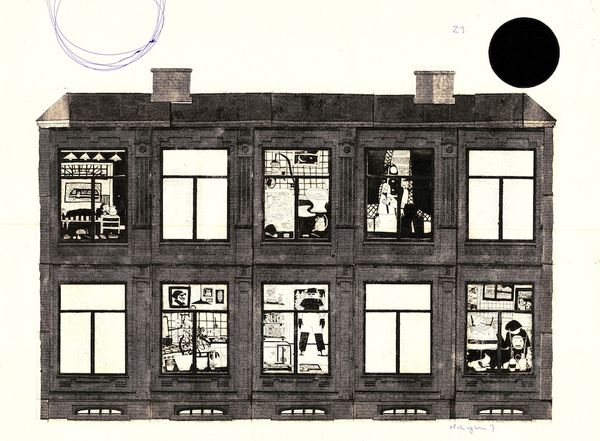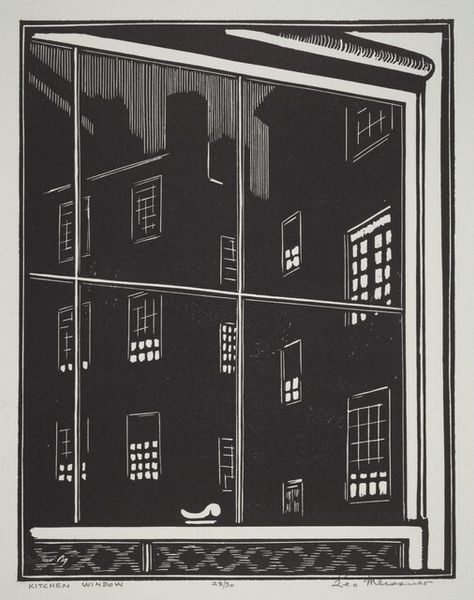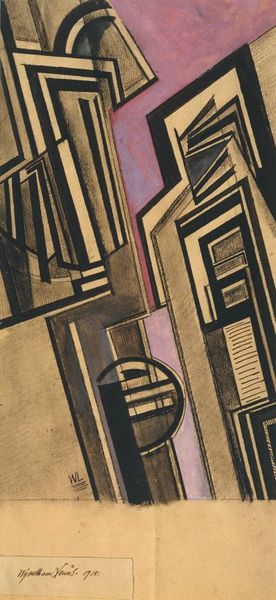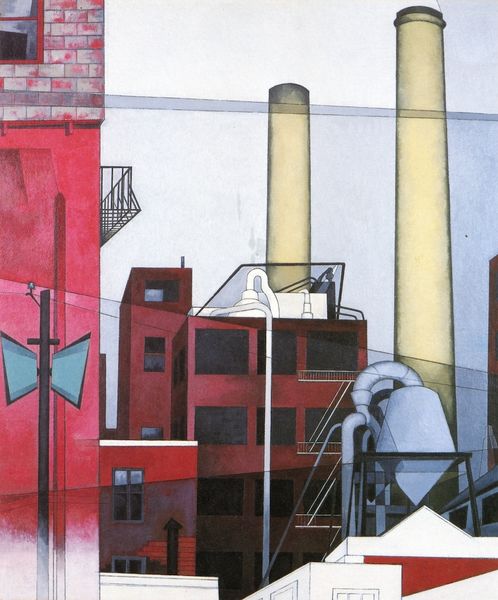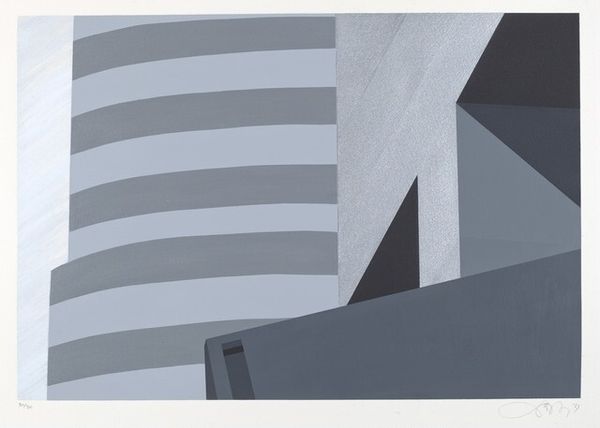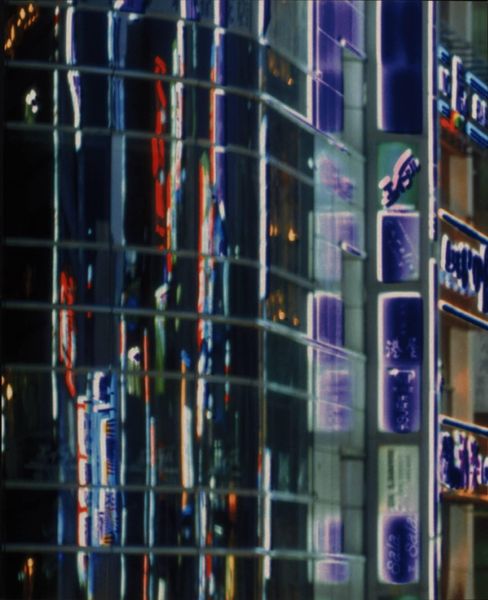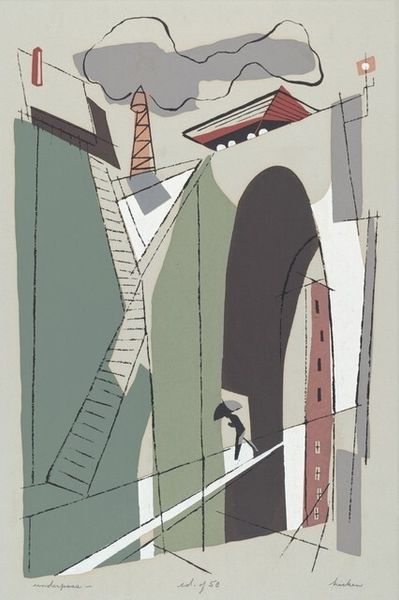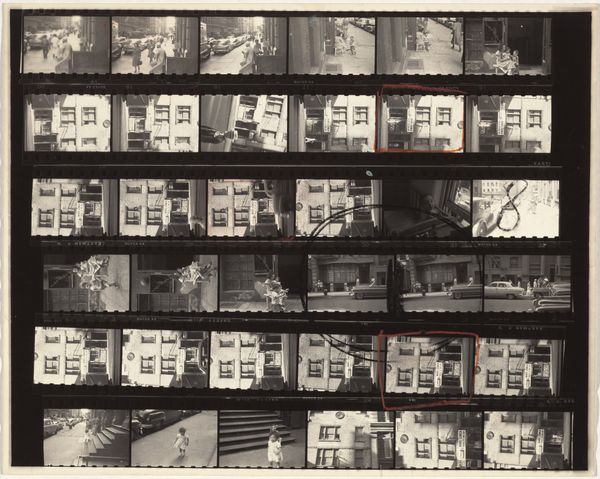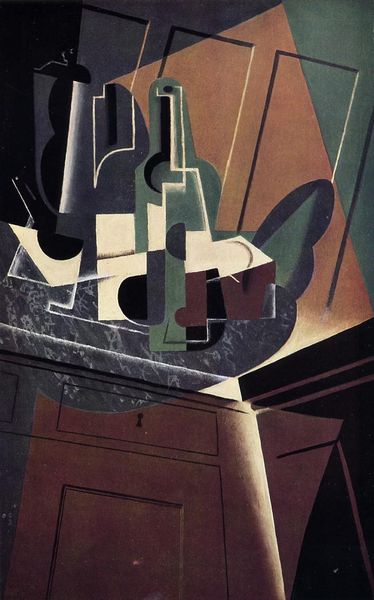
painting
#
precisionism
#
cubism
#
painting
#
geometric
#
line
#
cityscape
Copyright: Public domain
Curator: Charles Demuth's 1921 painting, "Rue du Singe Qui Pêche," presents a fascinating geometric rendering of a Parisian street. What strikes you first about it? Editor: It's unnerving. All these hard angles, colliding planes, and fragments of text create this uneasy sense of fragmentation and visual discord. Where are we meant to focus? Curator: Exactly! That fragmentation is key. Demuth employs elements of Cubism to break down the architectural space. Observe how signage—"Hotel," "Tobac," snippets of shop names—hover between representation and pure geometric form. This recalls Synthetic Cubism’s collage-like construction, blurring boundaries. Editor: I notice too how the lack of people or movement renders a familiar scene—a street view—somehow alienating, cold even. Are there specific symbolic meanings buried within this seemingly detached representation? Curator: It's a question of how those geometric forms generate new meanings. Look at the intersecting planes, they divide up space and even text. Note how "Tobac" is partially occluded and the name of the street, "Singe Qui Pêche" (the monkey that fishes) isn't fully displayed. The painting suggests a dynamic tension—commerce vying for attention but rendered static, frozen within the composition's structure. In psychoanalytic terms, what does this mean about the memory of place? Editor: I am drawn back to the idea of fragmentation, which, to me, communicates the experience of modernity, particularly the period between the wars. New experiences and information fragment the familiar reality. Even language is reconfigured, dislocated. In that sense, Demuth isn't merely reflecting urban chaos. Curator: He uses precision to expose the chaos—or at least the changing nature of perception and cultural experience during his time. Editor: Indeed. What I initially perceived as simply jarring, is now coming into focus as something deeper. It evokes a tension that lies in that historical moment. Curator: I find that my relationship to it deepens each time, it offers new ways to interpret an ever evolving world and collective memory. Editor: A world mediated by geometries of culture, commerce and ever-changing human interaction, absolutely. It has definitely left me contemplating how urban spaces affect how we move and even understand things.
Comments
No comments
Be the first to comment and join the conversation on the ultimate creative platform.

